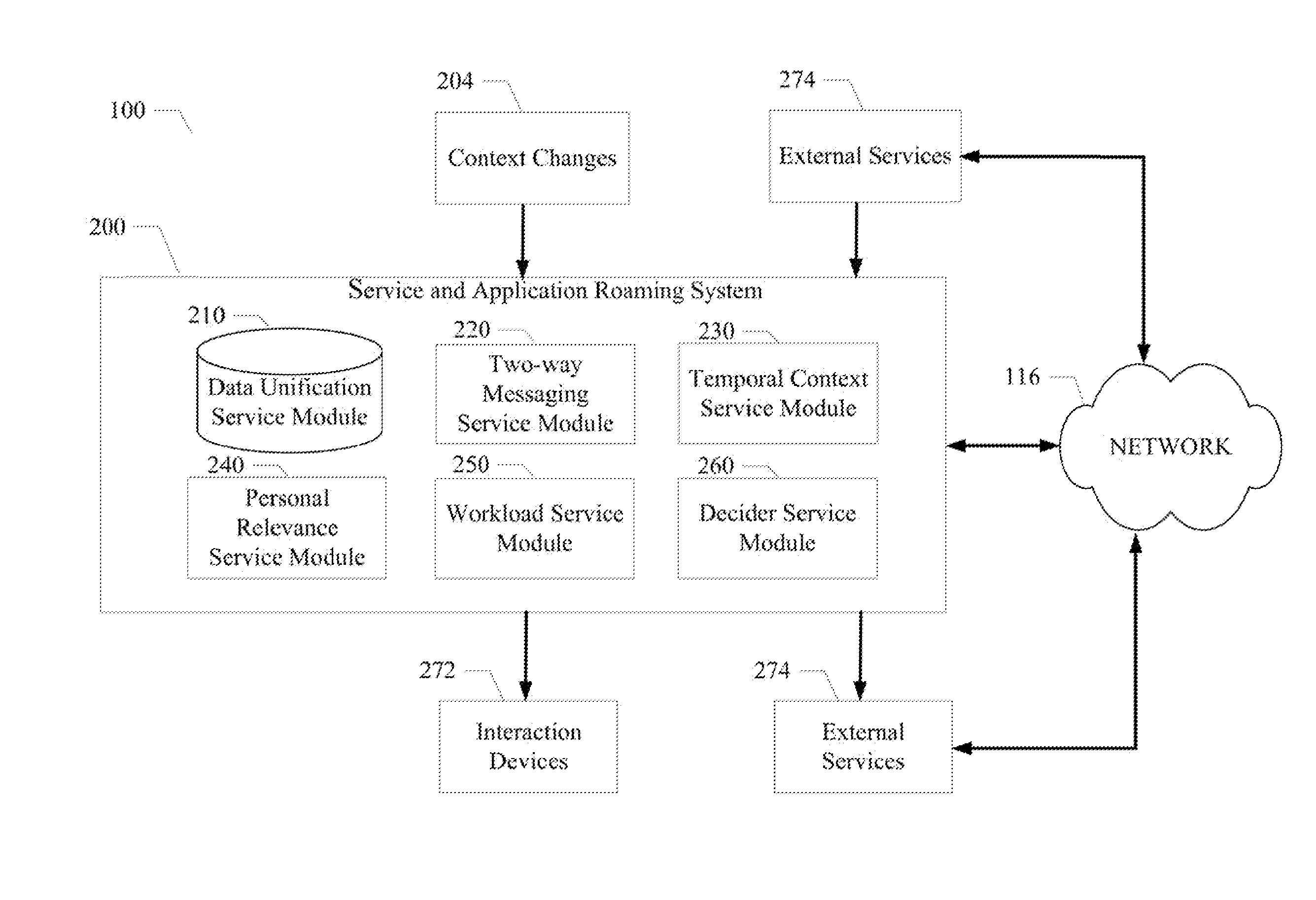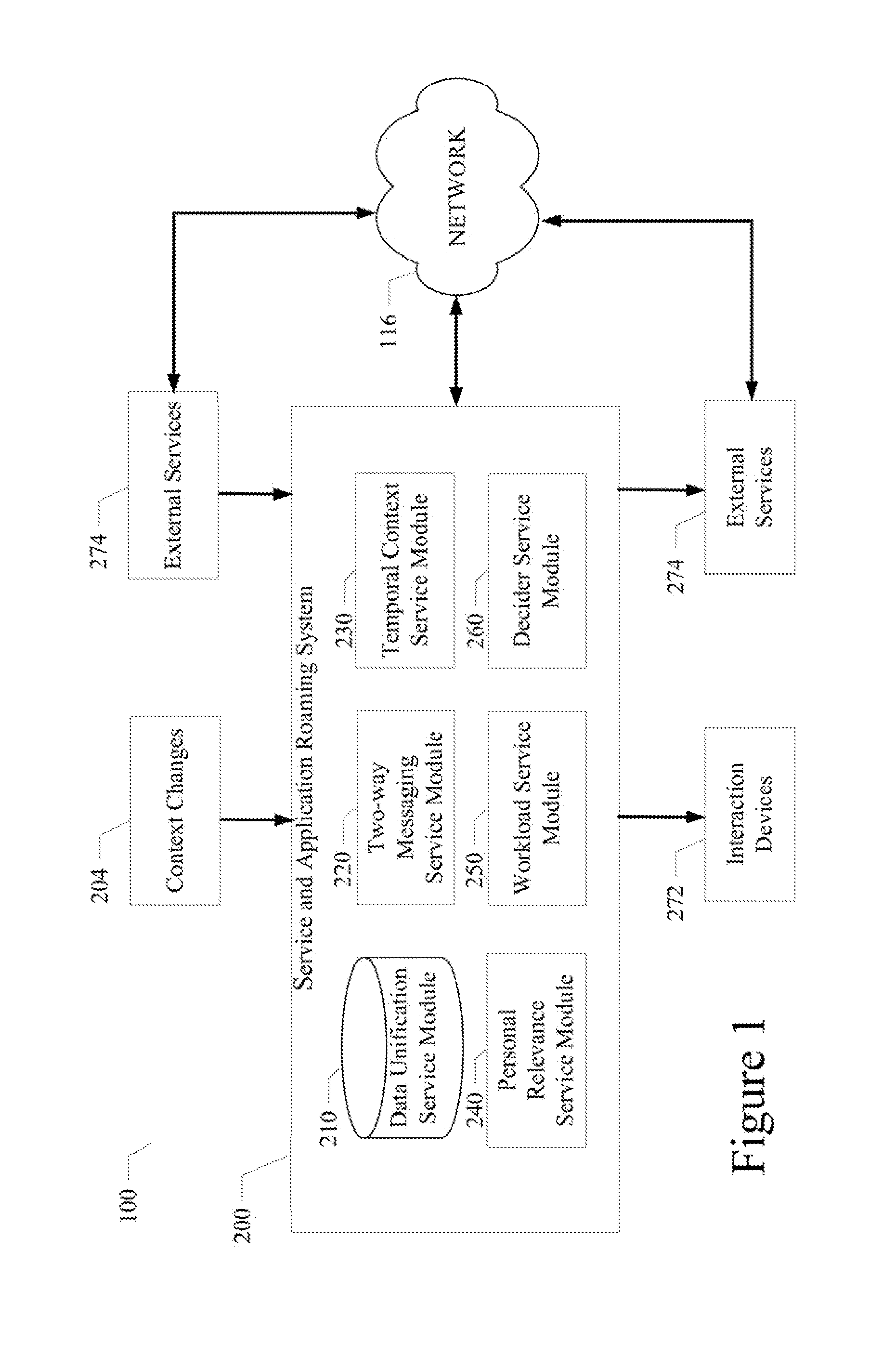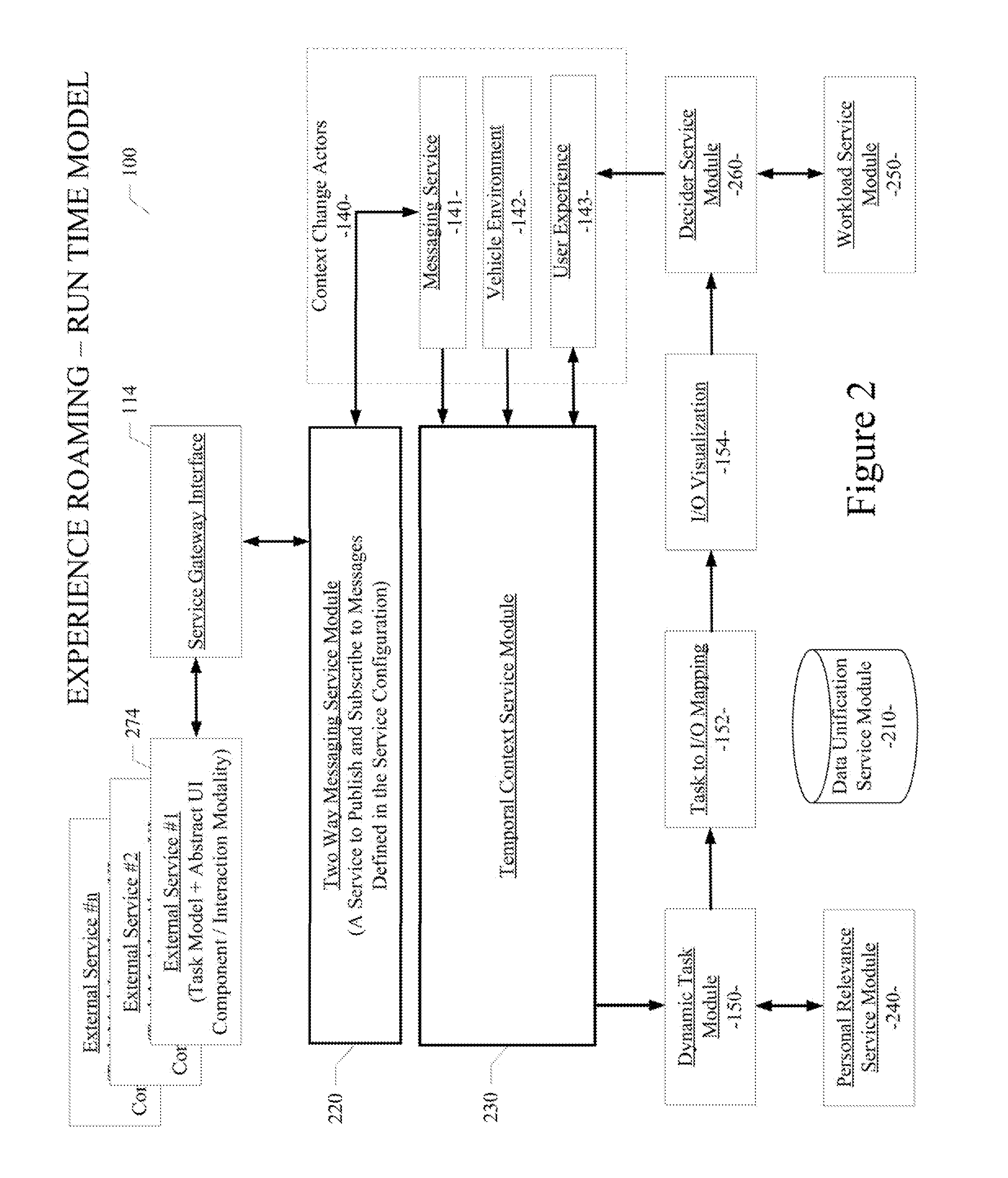System and method enabling service and application roaming
a service and application roaming technology, applied in the direction of transmission, electrical equipment, etc., can solve the problems of user consumption of many mobile applications (apps) and cloud services, processing systems that may include sophisticated and expensive processing components, and each of the above processing systems is independent, etc., to preserve the utility, usability, and desirability
- Summary
- Abstract
- Description
- Claims
- Application Information
AI Technical Summary
Benefits of technology
Problems solved by technology
Method used
Image
Examples
Embodiment Construction
[0032]In the following description, for purposes of explanation, numerous specific details are set forth in order to provide a thorough understanding of the various embodiments. It will be evident, however, to one of ordinary skill in the art that the various embodiments may be practiced without these specific details.
[0033]As described in various example embodiments, a system and method enabling service and application roaming are described herein. In one particular embodiment, a system and method enabling service and application roaming is provided in the context of a cloud-based vehicle information and control ecosystem configured and used as a computing environment with access to a wide area network, such as the Internet. However, it will be apparent to those of ordinary skill in the art, that the system and method enabling service and application roaming described and claimed herein can be implemented, configured, and used in a variety of other applications and systems.
[0034]Re...
PUM
 Login to View More
Login to View More Abstract
Description
Claims
Application Information
 Login to View More
Login to View More - R&D
- Intellectual Property
- Life Sciences
- Materials
- Tech Scout
- Unparalleled Data Quality
- Higher Quality Content
- 60% Fewer Hallucinations
Browse by: Latest US Patents, China's latest patents, Technical Efficacy Thesaurus, Application Domain, Technology Topic, Popular Technical Reports.
© 2025 PatSnap. All rights reserved.Legal|Privacy policy|Modern Slavery Act Transparency Statement|Sitemap|About US| Contact US: help@patsnap.com



